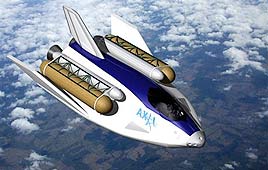As you may recall, Japan a few days earlier took a step to restore confidence in its space agency when it launched a satellite into orbit on Saturday, 15 months after the previous attempt ended in failure when the rocket exploded in the air shortly after launch

Japan's space agency is outlining plans that may include manned flight and a manned research base on the moon. A newspaper reporter in Japan on March 7.
As you may recall, Japan a few days earlier took a step to restore confidence in its space agency when it launched a satellite into orbit on Saturday, 15 months after the previous attempt ended in failure when the rocket exploded in the air shortly after launch.
This failure was especially painful because it occurred shortly after China's successful attempt to put a man in space - a step that Japan at the time had no plans to undertake at all.
The Manichi Shimbun daily reported on Monday that the Japan Aerospace Exploration Agency (JAXA) has a basic long-term plan that also includes the development of space vehicles similar to the US space shuttle by 2025. Around the same time, Japan hopes to begin assembling a research base on the moon. the newspaper said.
Other plans include using satellites to collect information about disasters such as tsunamis directly to cellphones, Messer said. A Jaxa senior official declined to comment on the possible content of the plan, which is expected to be finalized on March 31, the end of the budget year in Japan. However, the official said that he believes there will be no change in access to manned flights.
Many in the space industry say that Japan is not capable of becoming a major player in the field of launching commercial satellites, but scientists argue that a space program is important for national prestige. In this way, Japanese satellites will be able to warn the residents of other Asian countries about tsunami waves.
As a reminder, on Saturday the Japanese H-2A spacecraft was launched from the tiny island of Tangeshima, about a thousand kilometers southwest of Tokyo, and it carried a dual-use satellite - navigation and weather. It was the seventh launch since the H-2A program began in August 2001, the only failure being in November 2003.
The failed mission resulted in the loss of two spy satellites that were supposed to monitor North Korea, which recently announced it had nuclear weapons and held a six-nation summit aimed at ending its nuclear ambitions. The Japanese space program went awry in the 2s after two unsuccessful launches of the H-XNUMXA rocket.
Despite the success from about a month ago, Japan will have to overcome many obstacles, including lowering the cost of launches. The last launch cost 9.4 billion yen ($89 million) and increase confidence in the launch process as a whole. "Japan must close a big gap in the field of space" wrote the important Japanese newspaper Ashei Shimbun. However, the system administrator added that despite the seven failures of the H-2A missile, Japan's success rate reaches 86 percent compared to the 90 percent success rate of the United States and the 97 percent success rate of the European Ariane program, although these figures are compared to the above From a hundred launches of each agency.
